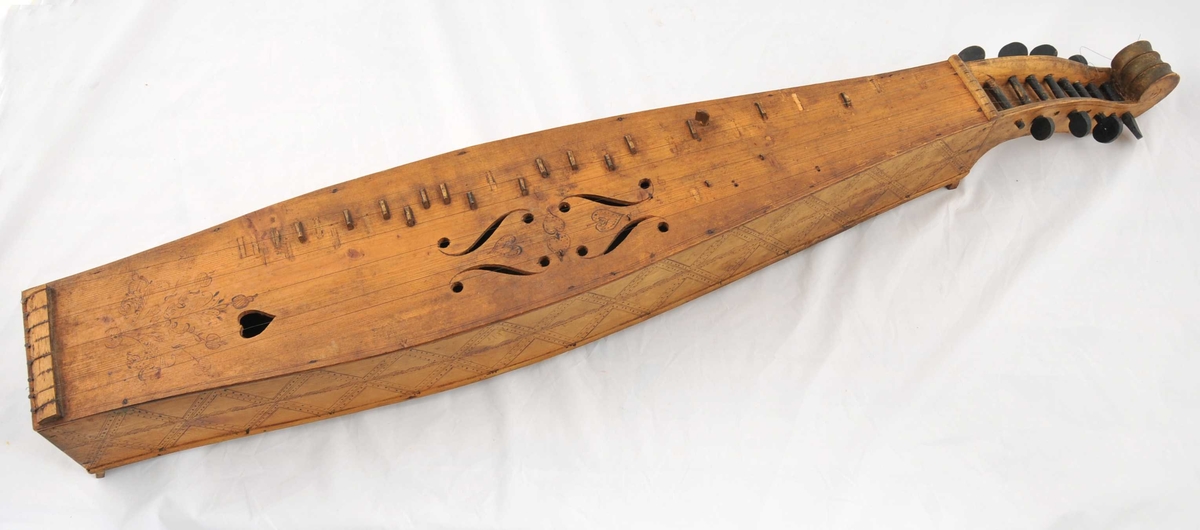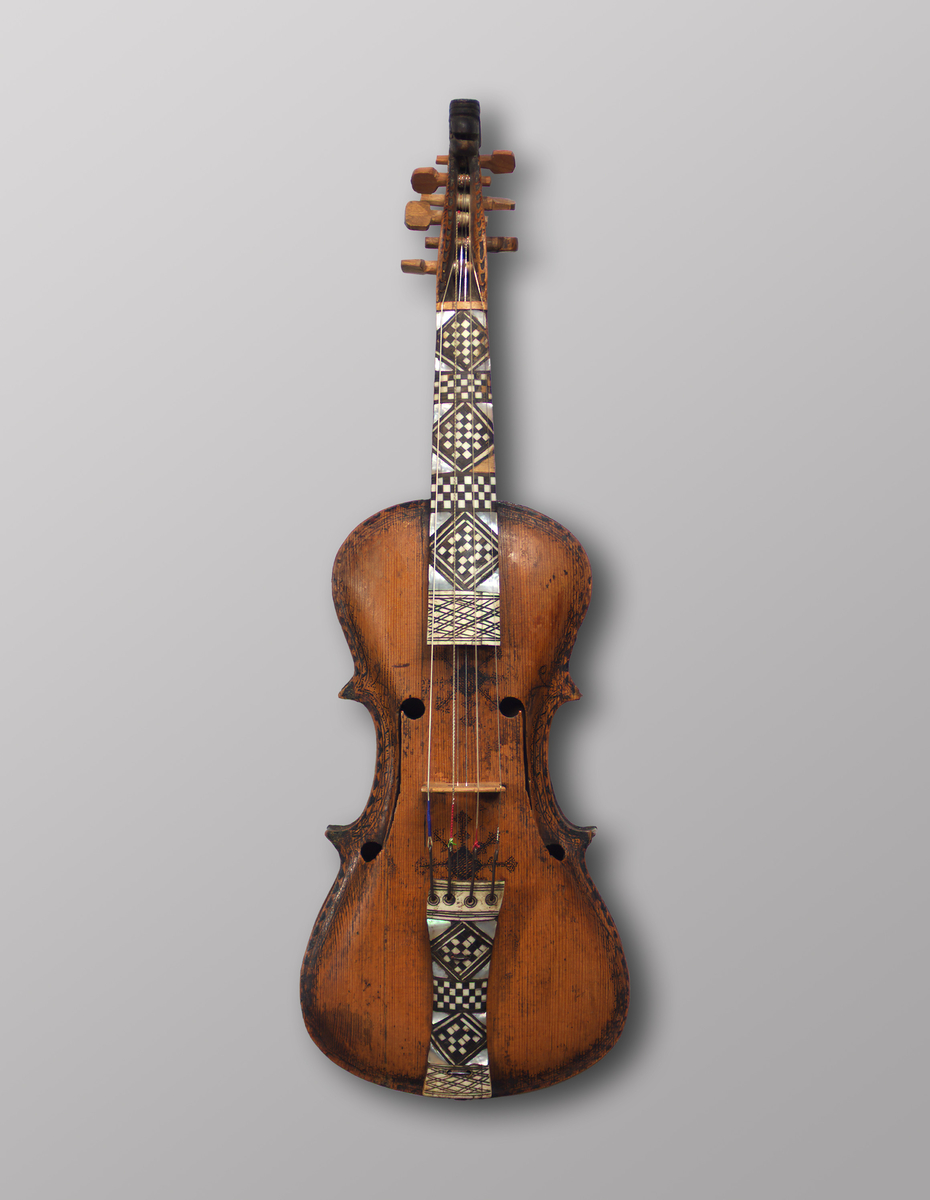Norwegian traditional music

Historical Background

Norwegian traditional music has centuries-long roots and consists of vocal and instrumental music that has served a range of functions, including dance music, ceremonial music, and functions within animal husbandry.
Systematic collection of folk music began during the national romantic movement of the mid-nineteenth century. This was part of a comprehensive effort to collect the living folk traditions of the rural peasant culture with the aim of constructing a Norwegian national identity.
A second round of collecting took place around the turn of the century, primarily focused on vocal music. During the twentieth century scholars collected Hardanger fiddle (hardingfele) and standard fiddle music, which resulted in the publication of several volumes of transcriptions.
Organology
Older Norwegian folk music instruments include wind instruments such as lur (a conical wooden tube blown like a trumpet), seljefløyte (a flute made from willow bark without finger holes), bukkehorn (goat horn), langeleik (a box zither sounded by a plectrum), and munnharpe (jaw harp).
Other central folk music instruments include standard fiddle, hardingfele (Hardanger fiddle), and torader (diatonic button accordion).
Munnharpe (jaw harp)

The Norwegian munnharpe (jaw harp) is related to European jaw harps from the high and late Middle Ages. The instrument has a relatively small frame and long arms. The frame is either triangular, oval, or straight-shouldered, and like the medieval models, the arms are rhombus-shaped in cross section, while the frame is square-shaped. However, the instrument differs from the medieval harps in that the spring is pushed through a hole in the frame and secured with an iron wedge. There is also another type of very small jaw harp found in one part of Norway with a round frame and riveted springs.
In Norway, the technique of closing the throat (achieved by making a “k” sound) is used when playing jaw harp. This makes some of the overtones clearer. By using this technique, combined with overtones played with an open throat (created by saying “a”), one can play a broader range of notes. Other important aspects of the Norwegian playing style are phrasing and the use of ornaments.
Langeleik

The langeleik is a long box with a single melody string with wooden frets underneath it, and several drone strings. The melody string is pressed down using the fingers of the left hand (usually the index, middle, and ring fingers) and the strings are plucked with a horn plectrum.
When being played, the langeleik is placed on a wooden table, which helps to amplify the sound. The langeleik is tuned to the notes of a triad, usually with the major third, although other tunings are also used. The langeleik is related to other similar instruments in Europe, one example being the French “Epinette des Vosges”.
The oldest preserved langeleik in Norway is inscribed with the year 1524. The bodies of old langeleiks were carved from a single piece of wood (without bottoms), and they display a wide diversity in terms of design and scales. The old scales did not have half steps, but a mixture of whole and approximately 3/4 steps. The most common contemporary langeleik is a model from around 1870, with a separate back, top, and sides, and with a diatonic major scale. In recent years, an electric langeleik with movable frets has been introduced, and more and more musicians are exploring this instrument.
Hardingfele

The hardingfele (Hardanger fiddle) is a Norwegian folk instrument that resembles the European violin. Like the violin/standard fiddle, the hardingfele has four bowed strings; however, it also has four or five sympathetic strings, a flat bridge and fingerboard, a shorter neck, and elaborate decoration. The instrument also has higher arching and a smaller body than the standard fiddle.
The Hardanger fiddle was developed in the Hardanger region of Norway during the 17th century. The oldest known Hardanger fiddle is Jaastadfela (pictured), made by Ole Jonsen Jaastad in Ullensvang, Hardanger in 1651. The instrument is mainly played in western Norway and the valleys in south-central Norway. The playing style is characterized by extensive use of drones, double stops, and ornamentation.
During the national romantic movement of the 19th century, the Hardanger fiddle became an important national symbol in Norwegian nation-building efforts and was regarded by many as Norway’s “national instrument”.
Genres
Both vocal and instrumental music have traditionally been performed solo. The oldest genres of vocal folk music are connected with animal husbandry and include lokk (cattle calls) used by herders. Another older genre, medieval ballads, are part of a pan-Scandinavian repertoire of epic narrative poetry. The genre of folk song known as stev is a form of poetry found in two forms, gamlestev (old stev) and nystev (new stev). Additional vocal genres include religious folk music, bånsull (lullabies), and a range of other folk song forms (e.g., work songs, shanties, broadside ballads).
The oldest genres of instrumental folk music are also connected with animal husbandry, and include melodies performed on traditional wind instruments such as the lur, bukkehorn, and seljefløyte. This music was used to communicate across large distances.
Most instrumental folk music is dance music. Dance music repertoire can be divided into two genres: bygdedans music and runddans music.
- Bygdedans music is an older genre of dance music, and includes the triple-meter dances springar, springleik, pols, and rundom, as well as the duple-meter dances gangar, halling, rull, and bonde
- Runddans music (also called gammeldans music), which includes the dance types vals, mazurka, reinlender, and polka, emerged in Norway beginning in the late eighteenth century
Videos
Playlist
Resources
Web resources
- Tutorial videos (fiddle, Hardanger fiddle, langeleik) produced by the record label Ta:lik (YouTube)
- Tutorial videos (langeleik) produced by Jørn Hilme-stemnet (YouTube)
- Link to digitized, searchable versions of the 11 volumes of fiddle and Hardanger fiddle transcriptions, Norsk folkemusikk serie 1: Hardingfeleslåttar and Norsk folkemusikk serie 2: Slåtter for vanlig fele
Literature in English
- Blom. (1981). The dancing fiddle: On the expression of rhythm in hardingfele slåtter. I Sevåg (Red.), Norsk folkemusikk: Serie 1 7 : Hardingfeleslåttar Springar i 3/4 takt: Bd. Serie 1 (pp. 305–312). Universitetsforlaget. https://www.nb.no/items/af48b599bdd2e5c0fad6c47993f3cb24?page=307
- Goertzen, C. (1997). Fiddling for Norway: Revival and identity. University of Chicago Press.
- Hopkins. (1986). Aural thinking in Norway : performance and communication with the hardingfele. Human Sciences Press.
- Kvifte, T. (2008). What to listen for in Norwegian folk music. Taragot Sounds.
- Omholt. (2010). How old is a tune? Svenskt visarkiv, 29, 169–178. https://hdl.handle.net/11250/2438119
- Sevåg, & Sæta, O. (Red.). (1992). The Fiddle – from Europe to rural Norway. I Norsk folkemusikk, Serie II, Slåtter for vanlig fele: Bd. Serie II (pp. 35–51). Universitetsforl. https://www.nb.no/items/URN:NBN:no-nb_digibok_2013121005041?page=37
Literature in Norwegian
- Aksdal, B., & Nyhus, S. (1993). Fanitullen: Innføring i norsk og samisk folkemusikk. Universitetsforlaget. https://www.nb.no/items/a06b8ae7ab636ed9728fba22452ef9a3
- Bakka, E. (1978). Norske dansetradisjonar. Samlaget. https://www.nb.no/items/5eca8b889cce9e9722f9fa3ebfc673bd
- Bråten, K. A. (2020, October 20). Langeleiken i Noreg – spelet og tradisjonen. Immateriell Kulturarv. https://www.immateriellkulturarv.no/bidrag/langeleiken-i-noreg-spelet-og-tradisjonen/
- Sevåg, R. (1973). Det gjallar og det læt: Frå skremme- og lokkereiskapar til folkelege blåseinstrument (Vol. 10). Det Norske Samlaget. https://www.nb.no/items/URN:NBN:no-nb_digibok_2007060101036